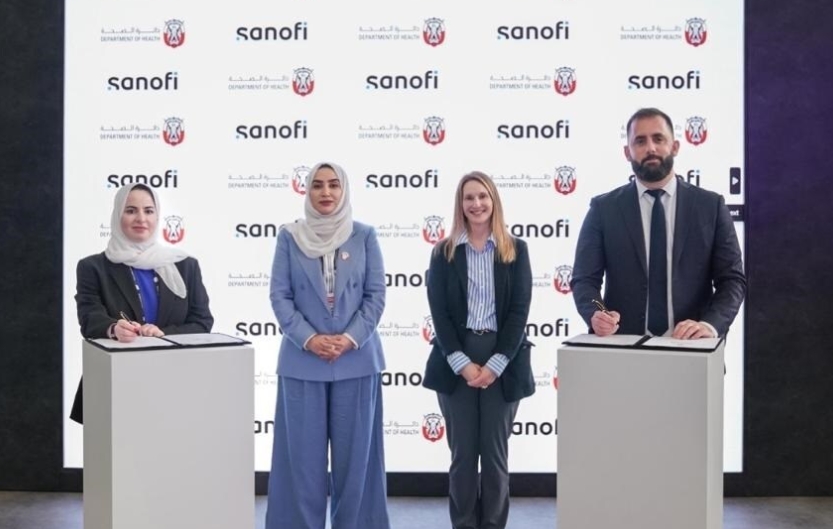
According to the International Diabetes Federation (IDF) Diabetes Atlas 2021 report, there were 537 million (1 in 10) adults living with diabetes, globally. The global diabetic population is expected to grow to 643 million by 2030 and 783 million by 2045. South-East Asia has 90 million adults (1 in 11) with diabetes, and the number is expected to increase to 113 million by 2030 and 151 million by 2045. The Western Pacific region has 206 million (1 in 8) diabetic adults, and the population will reach 238 million by 2030 and 260 million by 2045. Together, these regions spent $251 billion for healthcare costs in 2021.
The ethnic and genetic predisposition for diabetes among Asians, high risk of gestational diabetes, lifestyle and nutrition, and unplanned urbanisation have been attributed to the diabetic epidemic in Asia. Without stringent measures for timely diagnosis and prevention, it is impossible to control the growth of the diabetic population.
With almost half of the world’s diabetic population in Asia, it is imperative that the governments in the region and the key players in the diabetic devices industry take active steps to contain the rise in numbers. Moreover, the large diabetic population pool in Asia presents a great growth opportunity for the diabetic devices companies. The government initiatives of the different countries in the region, such as the “75/25” initiative of India, the Healthy China initiative of China, and ‘War on Diabetes’ of Singapore for diabetes prevention and control are driving the growth of diabetic solutions addressing the pressing needs in the region.
Governments have increased the availability of traditional diabetes diagnostic strips and essential medicines through medical camps. However, these solutions are inadequate in controlling and managing diabetes, especially for patients under intensive insulin therapy and with problematic hypoglycemia.
Diabetes is a dynamic disease and a closer watch on glucose levels is required to manage diabetes effectively. Therefore, continuous glucose monitoring (CGMs) is emerging as the new standard of care for diabetes. However, the utilisation of CGMs varies between countries in the region. While CGM is common in Japan, it is sub-optimal in many Asian countries such as China, India, Singapore and Philippines. The large population, limited healthcare resources, low accessibility to quality healthcare and large undiagnosed population (1 in 2 adults) in Asia need tailored innovative solutions to effectively control the rise of the silent epidemic in the region.
The global key players are expanding at a rapid pace in these regions with new launches. There are local-grown startups and emerging companies competing with them as well. Solutions that increase the accessibility and affordability of diabetes care are the need of the hour.
Diabetic devices and digital care programmes tailored for Asia
Continuous glucose monitoring (CGM) with devices such as the FreeStyle Libre CGM of Abbott, Guardian Connect System of Medtronic and Dexcom G6 CGM system of Dexcom, have become common practice in Asian countries such as Japan, Australia and South Korea, which provide subsidies and reimbursement for CGM. These devices enable the diabetic patients to measure their glucose levels in real-time and manage their diet and lifestyle accordingly. Diabetes care devices companies are trying to bring down the cost and increase the accessibility of their devices to encourage adoption. CGM sensors at low cost through local vendors, such as Infinovo (China), Terumo Corporation (Japan), and health and wellness companies are enabling easier accessibility of the diabetes diagnostics.
Innovative therapeutic devices are also being introduced in the region. As access to healthcare is limited in many countries in the region, smart drug delivery devices, such as the smart insulin pens will have a high impact on diabetes control. Novo Nordisk launched the first smart insulin pen in many Asian countries, such as China and Japan.
Beyond CGMs and smart therapeutic devices, the industry is integrating glucose measurement and therapeutics for enhanced diabetes management. For example, Medtronic launched MiniMed 780G, the next generation closed-loop insulin pump system, in India in 2022. Enhancing glucose control without the hassle of decision-making will be particularly impactful in Asia that is known for its long work hours.
The digital solutions made a huge impact during the COVID-19 pandemic globally. Even while diabetes increased the risk of severity of COVID complications, diabetic services were reported to be significantly affected during the pandemic. Digital health ecosystems are emerging around the world, including Asia. Digital health solutions (digital therapeutics) and connected medical devices that allow self-management of chronic conditions and easier access to healthcare systems are garnering significant attention in Asia.
However, due to the distinct cultural, socio-economic, behavioural, and genetic differences between the West and Asia, many diabetic technologies prevalent in the West become impractical and ineffective in Asia. Therefore, digital health solutions and digital care programmes are being adapted for Asia or built by local startups for better fit and impact. Global diabetes devices companies are partnering with Asia-based device and digital companies.
Following Astellas Pharma’s partnership with Welldoc, in 2019, to develop and commercialise the digital health product, BlueStar, for Japan and other Asian countries, Astellas has partnered with Roche Diabetes Care Japan, in 2023, to combine Accu-Chek Guide Me system and BlueStar to build an integrated diabetes self-management solution. The blood glucose data collected by the Accu-Chek Guide Me system and the diet and activity tracked by BlueStar will be processed by an AI algorithm to personalise diabetes management for the patient.
Roche Diabetes Care India had launched a similar Integrated Diabetes Management Solution (IDMS) programme in India with Accu-Chek Instant blood glucose monitoring (BGM) system and mySugr app in 2019. In 2023, Roche Diabetes Care India also partnered with Indian companies Sanmina-SCI India Pvt. Ltd., and Parekh Integrated Services Pvt. Ltd. (PISPL) for local manufacturing of Accu-Chek Active to reduce costs and reduce the time-to-market.
Thus, the global companies with presence in the Asian countries have been able to develop customised solutions at low costs for the region, increase accessibility through local distributors, encourage adoption and thus, tap into the large market with high growth potential. The diabetic population in the region, in turn, can avail personalised diabetes management technologies of the highest order and global standards.
Similarly, Dexcom plans to launch a digital diabetes management service with its partner, Kakao Healthcare (South Korea) in South Korea in Q4 2023. Kakao’s AI and software technology was combined with Dexcom’s CGM devices to reduce socio-economic costs and improve quality of diabetes care in the country. The partnerships between Dinova Medtech (China) and Metronom Health (US) in 2021, 111, Inc (China) and Lilly China in 2020 are enabling advancement of digital diabetes management in China. Therefore, joint ventures of global medical device companies and local entities for technology convergence, distribution and funds is a frequent trend in the region.
Key players are also funding and partnering with non-governmental organisations (NGO) to increase the access to diabetes management solutions in resource-limited settings. Lilly is working with Action4Diabetes, an NGO focused on type 1 diabetes management, to increase awareness and provide diagnostic and medical services in South-East Asian countries, that include Laos, Cambodia, Indonesia, Laos, Malaysia, Myanmar, the Philippines, Thailand, and Vietnam.
Awareness of the advanced diabetes management solutions and their accessibility has increased with the collaboration activities among the global and local key players. But governments need to catch up with their reimbursement policies to accelerate adoption.
Integration of AI in diabetes diagnostics and management
As early detection and personalised treatment can have immense potential in managing diabetes, key players in the industry have started to exploit and integrate AI in their solutions, extensively, to transform diabetes care. AI is being applied in rapid screening, predictive analysis, personalising treatment and identification of new diabetes biomarkers.
AI-based personalised digital diabetes management solutions are emerging from Asia-based startups, such as BeatO app of BeatO (India), JoyHealth of Deciphering Health India Pvt Ltd (India), Twin Health (India), Medlinker Zhiyun Health app of ClouDr (China), and Health2Sync or SyncHealth of Health2Sync (Taiwan). The remote monitoring and online consultations provided by these solutions increase the access to quality healthcare. Furthermore, the data generated by these solutions can be leveraged for better understanding of the disease in the region and develop enhanced diabetes management for the diabetic patients. For example, India-based Fitterfly launched X-Labs, in 2023, to enable AI-driven improved digital diabetes management and to research virtual biomarkers to complement glucose measurements.
The growth of such locally grown AI companies, amidst large global players will enable affordable solutions. Most of the solutions are authorised by ISO and the FDA-equivalent regulatory authorities in the respective countries. But for global adoption, the solutions may need to be cleared by the FDA in the future.
Early diagnosis is also crucial as undiagnosed patients can develop diabetes-related complications, such as vision loss, heart attack, stroke, kidney failure and Alzheimer’s disease. Startups in Asia are building AI-based systems and technologies that enable remote and mass screening.
Tools such as the Diabetes Prediction Tool of 4Paradigm (China) enables early diagnosis of the complex disease. India-based Aarca Research has developed a portable Intelligent Health Risk Assessment (IHRA) system which can detect type 2 diabetes, hypertension, and dyslipidemia in the early stages through a 1 min infrared-based thermal scanning of the individual’s face.
Triaging the mass with the rapid screening at any setting will enable governments to diagnose larger groups of people, detect the disease early and impart diabetes management skills. Therefore, such solutions will help in providing diabetes care to rural and remote populations without health disparity.
In addition to glucose monitoring, it is also important to track and monitor diabetes-associated complications for better quality of life. The ophthalmic diagnostics companies are also integrating AI in their devices and play a major role in detecting asymptomatic progression of diabetes-related vision loss at its early stages. EyRIS Pte Ltd (Singapore) has developed a deep learning-based rapid retinal screening system which can detect diabetic retinopathy, glaucoma, and age-related macular degeneration within minutes. Artelus (India) has built a deep learning-based algorithm that can detect diabetic retinopathy in retinal images obtained by portable retinal cameras. Minimally trained personnel can screen patients at non-clinical settings and generate reports within 5 minutes.
Such AI companies are collaborating with portable ophthalmic device providers, such as Forus Health (India). Forus Health’s 3nethra portable retinal screening devices have been used by the Government of India’s NITI Aayog for the mass screening of the rural population. Thus, these startups intend to improve the affordability and accessibility of diagnosis and healthcare for all.
Novel diabetes management technologies
Innovative diabetes management technologies are also emerging from Asia. Non-invasive glucometers, EYVA of BlueSemi (India) and wristband based IoT sensor CGM of Quantum Operations (Japan) can improve compliance of patients enabling better diabetes management, lower cost of supplies and simplify administration for paediatric patients. Breathe Well-being, an India-based digital health company with the country’s first clinically proven diabetes reversal programme, raised $6.14 million from venture capitalists in 2023. Epifluidic diagnostic technologies (sweat sensing devices and interstitial fluid sensing devices) enabling non-invasive diabetes management among other applications are also under exploration by the academic groups. These cutting-edge technologies for diabetes management are being supported by governments and private venture capitalists. With global standard authorisations in the future, these solutions have potential to transform diabetes care not only in Asia, but globally.
Future full of promise
Asia will continue to be a large and rapidly growing market for diabetes care technologies. To be competitive and successful in the aggressive market with numerous large and startup companies, players will need large funds, a broad portfolio with desirable differentiators and a strong distribution network. Low-cost products, subscription-based solutions, reimbursement policies and training of patients and physicians will be required to promote the adoption among low income and middle-income regions. Large players are very intent on tapping the large market potential in Asia. Many global companies have set up local presence in Asian countries and local production through OEM partners in the countries to bring down the cost of their solutions, and more companies are expected to follow.
Furthermore, the increasing demand for high quality care in the region will also push players to develop products of the highest efficacy and to validate them with several approvals. For local players, partnerships or acquisitions by globally renowned players will increase people’s trust in their brands. East Asia is a hot-bed of innovations, and government initiatives continue to promote startup culture in the region. The huge support and funding from local governments and investors for diabetes management technologies will encourage local startups to focus on diabetes care. Through these activities, unique and Asia-customised diabetes management solutions may emerge in the competitive market in the future.
The ambitious focus of the global diabetes care players on the enticing Asian diabetic population will increase the awareness and standard of diabetes care in Asia. The local presence of these players or partnerships with local players will enable affordable and accessible diabetes solutions. In particular, digital diabetes technologies increase the accessibility of diabetes diagnostics and therapeutics, and the affordability will transform the diabetes care landscape in Asia. The solutions will back governments in their initiatives to intensify screening, diagnosis, treatment and follow-up for diabetes diagnosis and management among the mass.
Extensive collaborations among diabetic device providers, governments and non-governmental organisations will continue in the future. However, without subsidies and reimbursement policies, the use of CGMs and integrated therapeutic solutions will remain low in the region. It is imperative for the governments to introduce financial support policies that enable and encourage adoption of innovative diabetes management solutions in order to effectuate true diabetes prevention and control in their countries. Therefore, higher affordability and accessibility of diabetes management solutions, and innovative technologies with higher accuracy and efficacy, and increasing awareness will help in limiting the future surge of diabetic population in Asia.
Dr Sneha Maria, Industry Analyst, Medical Devices and Imaging-TechVision, Frost and Sullivan




